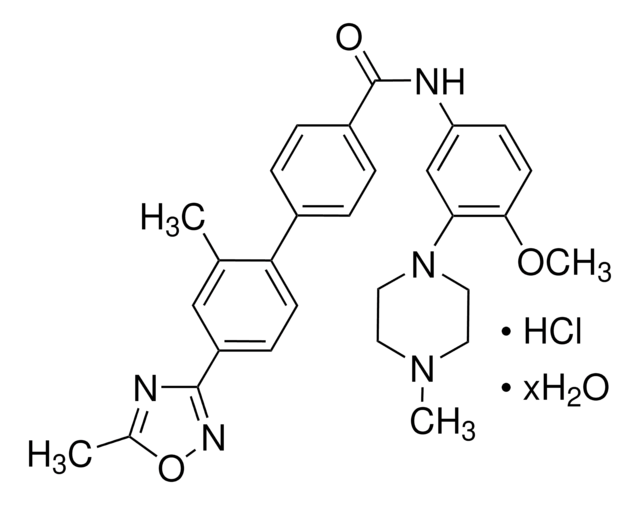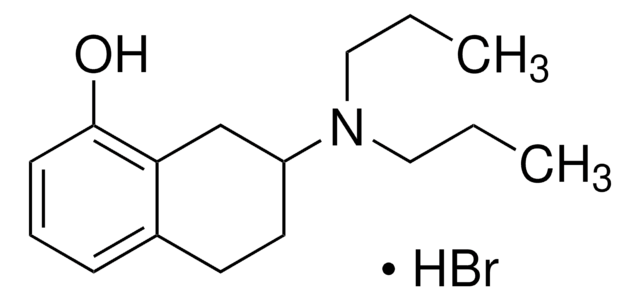SML0881
Rivastigmine tartrate
≥98% (HPLC)
Sinónimos:
ENA-713, Ethylmethyl-carbamic acid 3-[(1S)-1-(dimethylamino)ethyl]phenyl ester, N-Ethyl-N-methyl-carbamic acid 3-[(1S)-1-(dimethylamino)ethyl]phenyl ester tartrate, S-Rivastigmine tartrate
About This Item
Productos recomendados
assay
≥98% (HPLC)
form
powder
storage condition
desiccated
color
white to beige
solubility
H2O: 15 mg/mL, clear
storage temp.
2-8°C
InChI
1S/C14H22N2O2.C4H6O6/c1-6-16(5)14(17)18-13-9-7-8-12(10-13)11(2)15(3)4;5-1(3(7)8)2(6)4(9)10/h7-11H,6H2,1-5H3;1-2,5-6H,(H,7,8)(H,9,10)/t11-;1-,2-/m00/s1
InChI key
GWHQHAUAXRMMOT-RWALOXMOSA-N
¿Está buscando productos similares? Visita Guía de comparación de productos
General description
Application
Biochem/physiol Actions
Features and Benefits
signalword
Danger
hcodes
Hazard Classifications
Acute Tox. 2 Oral - Aquatic Chronic 2
Storage Class
6.1A - Combustible acute toxic Cat. 1 and 2 / very toxic hazardous materials
wgk_germany
WGK 3
flash_point_f
Not applicable
flash_point_c
Not applicable
Certificados de análisis (COA)
Busque Certificados de análisis (COA) introduciendo el número de lote del producto. Los números de lote se encuentran en la etiqueta del producto después de las palabras «Lot» o «Batch»
¿Ya tiene este producto?
Encuentre la documentación para los productos que ha comprado recientemente en la Biblioteca de documentos.
Artículos
Acetylcholine is synthesized from acetyl coenzyme A and choline by the enzyme choline acetyltransferase. In addition to its synthesis in the liver, choline employed in acetylcholine production is derived from dietary sources.
Contenido relacionado
DISCOVER Bioactive Small Molecules for Neuroscience
Nuestro equipo de científicos tiene experiencia en todas las áreas de investigación: Ciencias de la vida, Ciencia de los materiales, Síntesis química, Cromatografía, Analítica y muchas otras.
Póngase en contacto con el Servicio técnico










